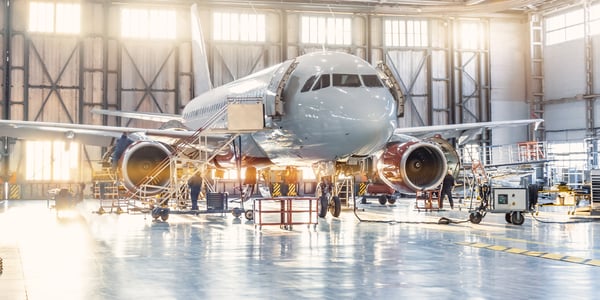Aging Aircraft: Repair or Replace?
Every liftoff, every touchdown, and every patch of turbulence takes its toll on the aircraft and the parts which allow it to take flight and stay in the air. As the plane continues to bear the brunt of these effects, the question arises: when does the aircraft need to be replaced because of age? Unfortunately, there is no definitive answer, which led industry experts to seek out and collect data about the cost of maintaining existing airplanes and parts and the cost of replacing them with wholly new ones. Let's talk about what they found.
Click Here for our The State of Aerospace Manufacturing Infographic
When the data was put into context, it showed how the age of the aircraft impacts the maintenance costs. Unsurprisingly, when an aircraft is young and the warranties are still in effect, the costs of maintenance are very low: less than half the cost of what they will be just 5 years later. However, as the plane reaches the ripe old age of 30, the wear on the craft has continued to take its toll, and the cost of maintenance has doubled from where they were at year 5.
The increase in cost is easily attributed to the cost of unscheduled service. Much of the unscheduled maintenance occurs as part of the scheduled inspections. In other words, during a scheduled maintenance check, an unexpectant item is found to be out of tolerance and is repaired or replaced. Naturally, this can prove to be an expensive process.

Scheduled maintenance is increasingly more likely to discover needed repairs in older aircraft.
Now, as time takes its toll on the craft, these unscheduled maintenance sessions become more frequent. This increases the cost of maintaining the craft and brings the added costs of down time. The data suggests that a plane between 15 and 20 years old will have 95% availability, but by the time the plane is 25, this drops to 70%; when the plane is 30, you can expect this availability rate is down to 55%. In other words, a new plane will be nearly twice as available as one that is 30 years old.
Unfortunately, though, despite this information, every plane will be different, so there is no one defined formula for when the costs of maintenance eclipse the cost of purchasing a new aircraft.
Therefore, there are three key metrics to track:
- Mechanical dispatch reliability
- Aircraft availability
- Maintenance cost per flight hour (both parts and labor)
Eventually, the costs of these three variables (the "lost opportunity cost") will outweigh the cost of acquiring a new aircraft. For years, the Federal Aviation Administration (FAA) and the aerospace industry as a whole have been pondering what regulatory measures that aircrafts should be required to adhere to when it comes to how and when they should be retired. But for now, the final decision is in your hands. When it comes to newer planes, though, technology and advancements in the finishing process allows parts to resist damage and last longer. When better parts are crafted and finished, planes last longer, so the lost opportunity cost will decrease.










